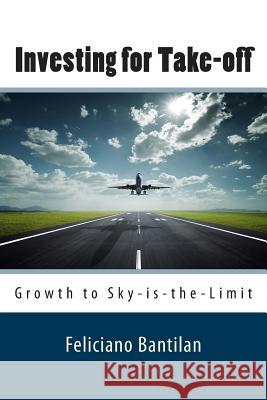Investing for Take-off: Growth to Sky-is-the-Limit » książka
Investing for Take-off: Growth to Sky-is-the-Limit
ISBN-13: 9781503229716 / Angielski / Miękka / 2014 / 104 str.
The book presents a new way of seeing - and thus, of doing - investing in the stock market. The new way sees investing as dependent on the dynamics of the two forces driving the stock market - the random force and the causal force. The random force is a buy or a sell of shares of stocks, sending the price up or down. The causal force is a net-buy over a period, sending the price up. The sign of the contribution to return distinguishes the random force from the causal force - the former contributes both positive and negative change, while the latter, only positive change. This sign difference determines the trajectories of the two forces diverging over time. Over the long term, the sum of return changes arising from the random force is zero, due to cancellation; the corresponding sum from the causal force, in the absence of cancellation, grows with time without limit. Therefore, there must be a point in time, when the sum of the return contributions of the causal force starts to pull away from the corresponding sum of the random force. This time-point is the start of our portfolio take-off to unlimited growth. The time-point divides the lifetime of our portfolio into two stages - before the take-off stage and the take-off to unlimited growth stage. That is the new way of seeing stock investing. The new way does investing in the way epitomized by the Asian martial arts - "Do not meet force with force, but channel the force flow from your foe to throw your foe off-balance." We call it the go-with-the-flow psychology. The force-flows from the two forces tell us that natural timescales govern the random and the causal processes driving the stock market, as expressed by its return. We cannot command the two forces to alter their dynamics to suit our wishes. The random force continues to affect our return significantly, until it self-destructs into insignificance. The causal force, on the other, slowly builds up its contribution to our return, until about 15 years when the accumulation of its contributions starts to dominate that of the random force. We deal with the two forces driving the stock market by going with the flow, or by channelling the flow to our advantage. We cannot fight the random force. If we do, we are on the losing side, as many investors are in, unknowingly. We cannot prevent the random force from affecting our return. Return fluctuation is a natural outcome of random processes. We should expect fluctuations. A tell-tale sign of fraud is a claim by any money manager of return without fluctuation, say, 10-12% annual return, year in and year out. The notorious Bernie Madoff made such a claim to his clients. Madoff was able to dupe many, even those who ought to know better, because they were ready - prepared by eons of history - to hear the claim of a regular, smooth, and fluctuation-free return. Such claims conform to our wishes of what returns should be. Eons of history prepared all of us to accept such claims. This is the reason for our difficulty in dealing with the "red" numbers in our portfolio. Going with the flow psychology tells us to dance around the random force by doing nothing in response to return fluctuations, to wait until it self-destructs to insignificance in about 15 years. The causal force is a positive force. It grows our money. The go with the flow psychology tells us to ride the causal force by choosing the stocks to populate our portfolio. Optimal choice of stocks means optimal ride on the causal force - means optimal return. Patience, we cannot have enough. For, investing is a long-time process, not a quick fix. That is the new way of doing investing in the stock market. In resume, investing is dealing with the two forces driving the stock market - sidestepping the random force, while riding the causal force. At the same time, it is equally dealing with the weaknesses of our human nature. Portfolio Take-Off to Sky-is-the-Limit is the "Grail" of investing
Zawartość książki może nie spełniać oczekiwań – reklamacje nie obejmują treści, która mogła nie być redakcyjnie ani merytorycznie opracowana.











